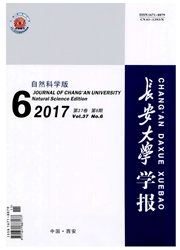

 中文摘要:
中文摘要:
为研究千米级混合梁斜拉桥边中跨结构力学行为特点及施工控制策略,为后续的参数识别、误差修正及最优控制决策提供研究基础,以主跨926m的鄂东长江公路大桥为依托,基于几何控制法,并充分考虑非线性效应,分析参数变化对成桥线形、内力的影响,并明确了结构响应对参数的敏感程度。研究结果表明:千米级混合梁斜拉桥由于边中跨结构自重、刚度的悬殊,致使边跨索力及应力对参数变化很敏感,中跨则相反,线形最敏感;对主跨需采取几何线形控制为主,边跨则应以索力控制为主的策略;无应力状态量是影响边中跨结构响应的最主要参数;边中跨结构行为及控制手段有别于全钢箱梁斜拉桥。施工实践表明实测值与理论结果吻合很好,且结构受力状况良好。
 英文摘要:
英文摘要:
For the study on the mechanical behaviors of the center and side spans of the thousandmeter-scale hybrid girder cable-stayed bridge and their construction control strategies so as to provide research basis for future parameter identification,error correction and optimal control,the Edong Yangtze River Bridge,with a main span of 926m,was used to analyze the structural response to parameter sensitivity on the basis of the geometry control method with full consideration of the structural nonlinear geometrical effect.Moreover,responses of configuration and internal force caused by parameters variation during completion state were studied.The results show that the cable force and girder stress in the side span are highly sensitive to variation in parameters,and the geometric profile in center span is more sensitive,which is attributed to thedifferences in girder stiffness and weight between the center and side spans.Therefore,the main strategy of the center span control involves the geometric profile.On the contrary,cable force should be given more priority for side span control.The structural responses in both mid-span and side-span are mainly affected by unstressed constants.Both mechanical behaviors and control strategies in mid-span and side-span are different from the features of steel box girder cable-stayed bridge.Construction experience indicates that the theoretical calculation is in good accordance with the field results,and the structure is under control.
 同期刊论文项目
同期刊论文项目
 同项目期刊论文
同项目期刊论文
 期刊信息
期刊信息
